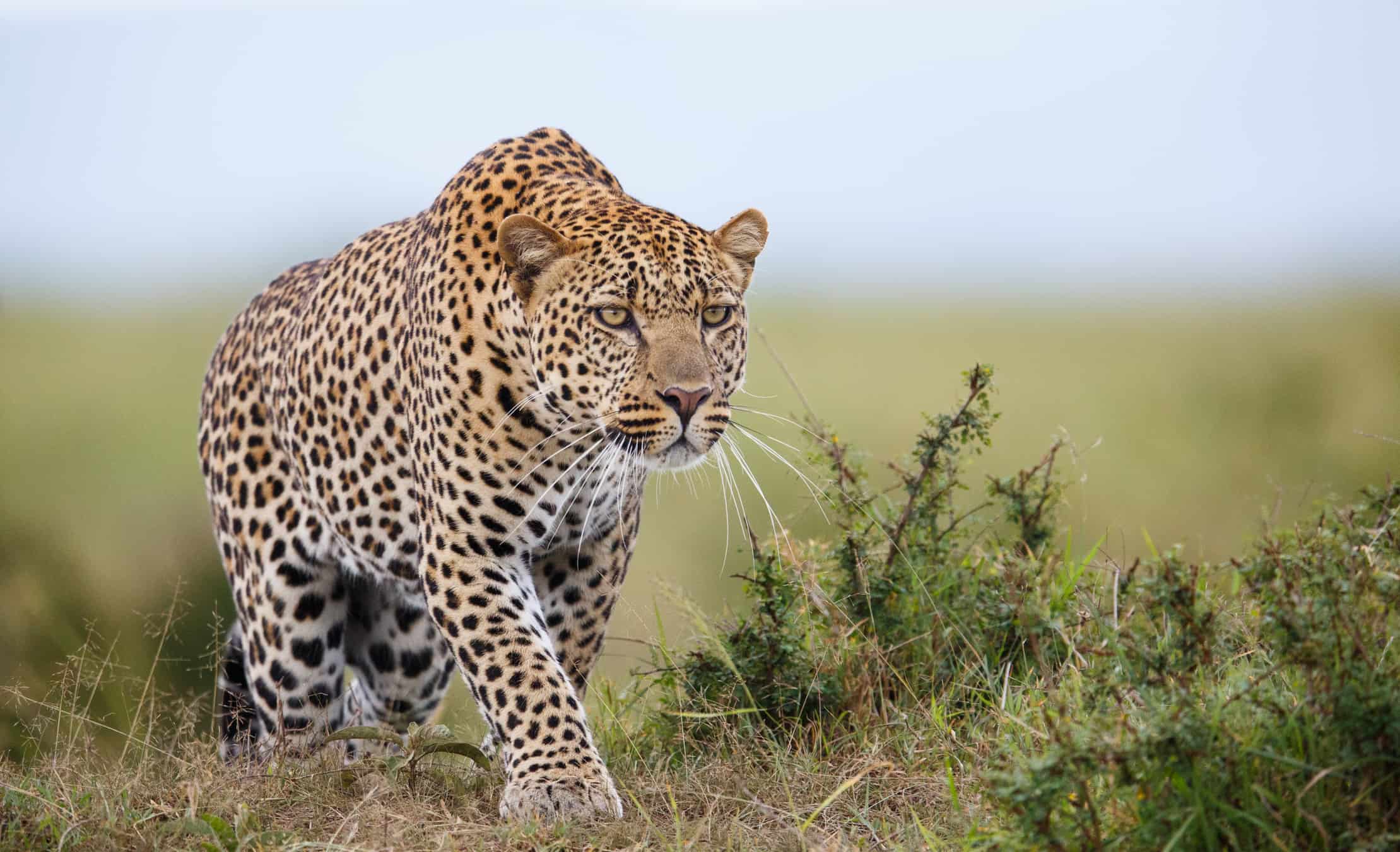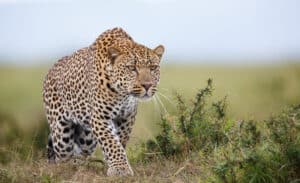This six-second video shows a leopard leap over a fence and latch onto a passing van. At first, you wonder if the leopard met the vehicle by accident. However, when it bites at the door frame, this is clearly an attack! When you reach the end, watch the video and see if you can figure out why this leopard leaped onto the car. In the meantime, let’s learn more about leopards.
Watch this leopard leap a fence and attack a car!
How High Can a Leopard Jump?
If you’ve ever seen a leopard leap, you might wonder how high or how far it can jump. Well, leopards can jump 10 feet straight up into the air! Like most cats, they have strong back legs and can activate all of their muscles all at once. This means they can push themselves forward fast with a great amount of power. A leopard might jump from tree to tree or out of a tree to attack prey. They also stalk their prey and get as close as they can before they pounce on it.

Leopards can leap 10 feet into the air and 20 feet forward.
©Pavith Malaka/Shutterstock.com
Compared to other high-jumping animals, the leopard’s leap of 10 feet is not very impressive. Both impalas and red kangaroos can jump about the same height as leopards, but each can clear about 30 feet in a single leap. Leopards can only jump about 20 feet forward. Meanwhile, dolphins can jump 12-30 feet straight out of the water!
Is It Normal Behavior For Leopards to Unprovoked?
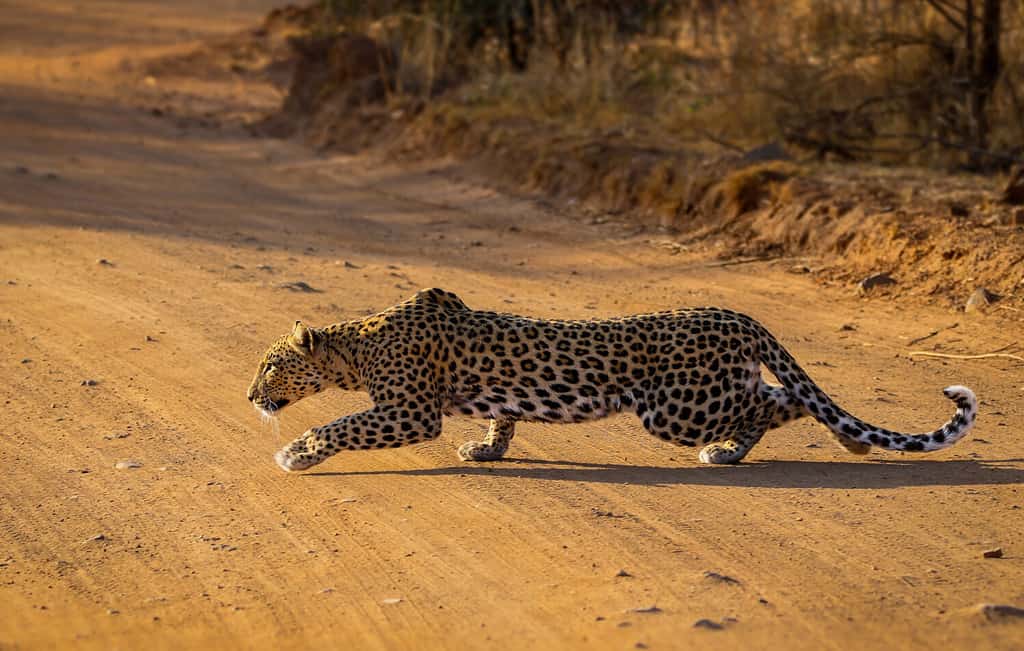
Leopards are ambush predators. They sneak up on their prey and leap when they get close.
©Heinrich Neumeyer/Shutterstock.com
Leopards are highly solitary creatures, preferring to spend the majority of their time alone. Leopards that attack people may become man-eaters but only if the see humans are the easiest prey. While leopard attacks are rare, they do happen and it’s best to avoid these wild animals.
Each leopard claims its own territory and uses scratch marks on trees, scent markings from urine, and droppings to signal other leopards to keep their distance. While males and females might venture into each other’s territories, this is primarily for mating purposes.
Leopards exhibit both danger and elegance, coupled with courage and resilience. Unlike many animals that flee and take cover when wounded, leopards grow fiercer, making them even more hazardous.
How Fast Can a Leopard Run?
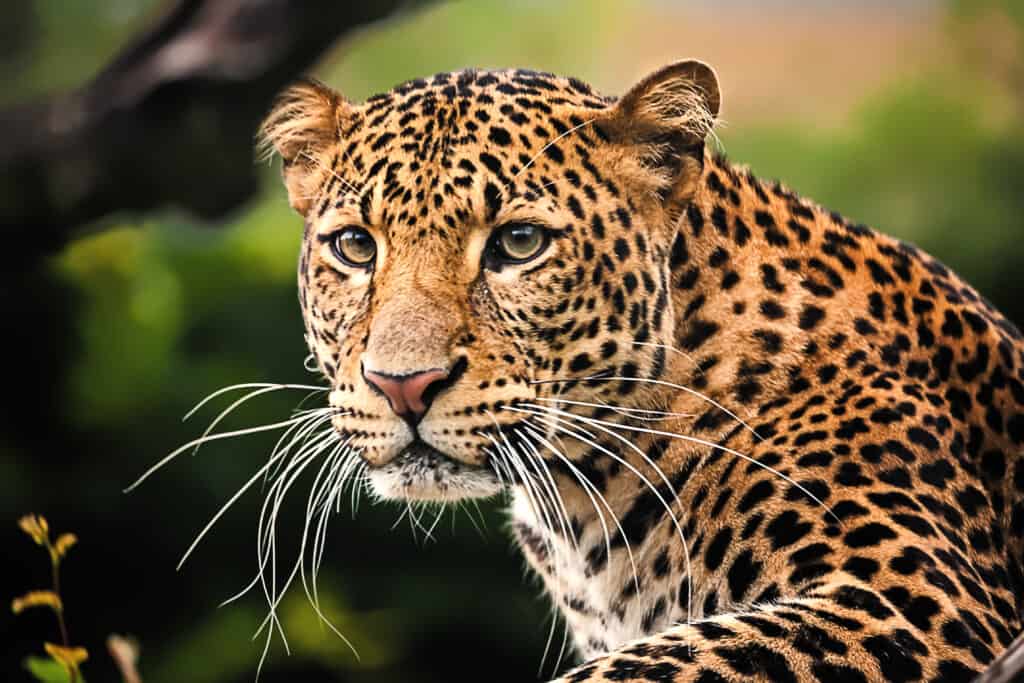
Leopards are highly solitary animals and leopard attacks are rare.
©abxyz/Shutterstock.com
Weighing in at up to 200 pounds, you might think leopards can’t run very fast. However, they do reach speeds of about 36 miles per hour. That’s about half the speed a cheetah can run.
Leopards don’t rely on speed to catch their prey. They rarely run more than about 600 feet. That’s because they are ambush predators. Leopards sneak as close to their prey as they can without them noticing, then they leap onto them. The element of surprise gives them the best chance for a kill.
Once they have made a kill, the leopard uses its strong jaws to grab it and leap into a tree. Their strong front legs, shoulders, and claws help them climb up high. This helps protect their meal from other predators that might try to steal it. Leopards can climb with up to 220 pounds in their jaws!
How Long Do Leopards Live?
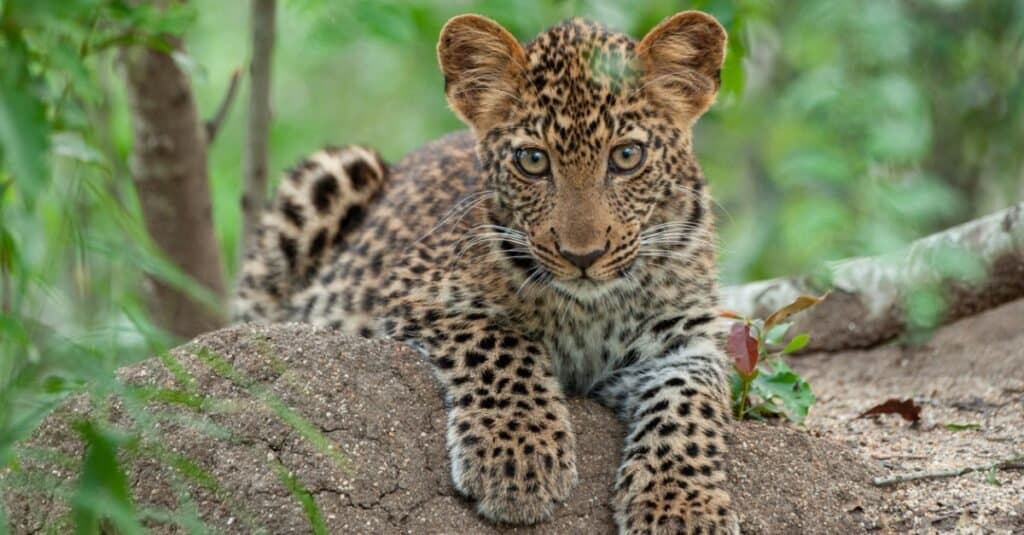
Leopard cubs live with their mothers for about two years.
©iStock.com/RudiHulshof
Generally, leopards live about 10-20 years. Wild leopards tend to have shorter lives than those in captivity. Leopard cubs live with their mothers for about two years. During this time, she teaches them everything she knows about survival in the wild. Baby leopards (cubs) learn to leap, stalk their prey, and carry prey into trees, where to get water and many other things from their mother. The adorable babies are born about three months after she becomes pregnant. Usually, there are 2-3 cubs in a litter.
They start learning skills at around 2-3 months old when they are allowed to leave the den. Leopard cubs begin discovering these skills by jumping and wrestling with one another and their mother. At about four months old, she begins teaching them how to hunt. She does this by letting them accompany her when she goes out. She will often catch small prey but not kill it, so they can have a chance to practice with the wounded animal. When they finally leave her, they often form territories nearby or overlapping with hers.
Thank you for reading! Have some feedback for us? Contact the AZ Animals editorial team.

